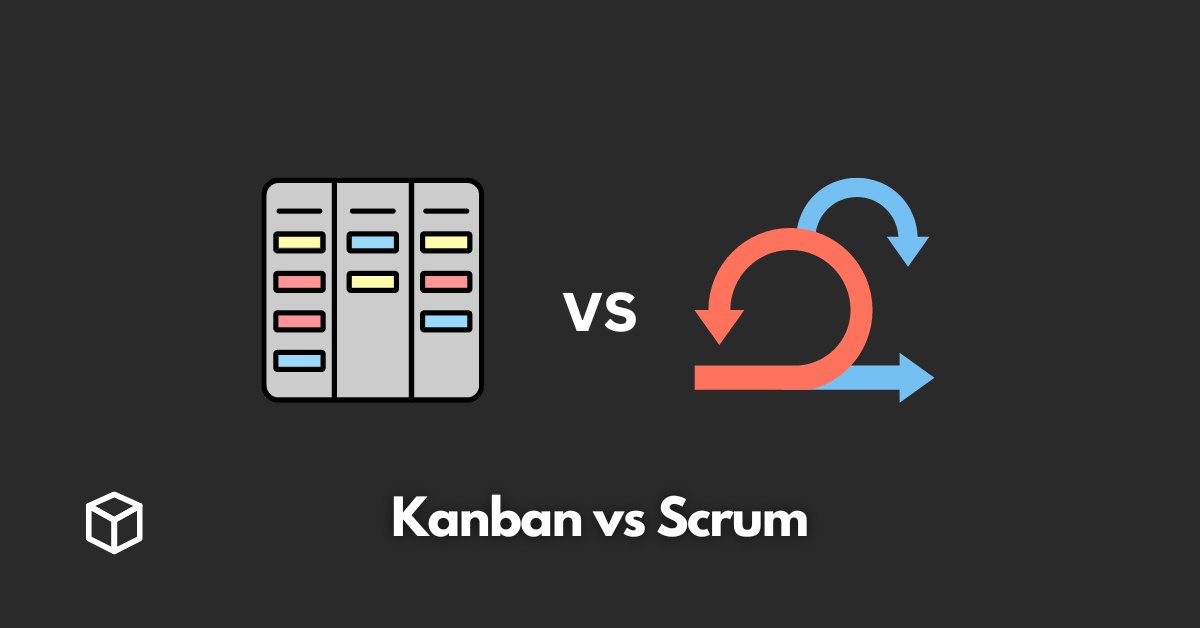Project management methodologies are a crucial aspect of any software development project. Two of the most popular methodologies are Kanban and Scrum.
Both Kanban and Scrum have their own set of principles and practices, and choosing the right one for your project can be a difficult decision.
In this article, we will discuss the key concepts of both Kanban and Scrum, their main principles and practices, and the benefits of using them for project management.
We will also compare and contrast the two methodologies and highlight the situations where one may be more suitable over the other.
What is Kanban?
Kanban is a pull-based system that was developed by Taiichi Ohno, an industrial engineer at Toyota, in the late 1940s.
The main principle of Kanban is to visualize the flow of work and limit work in progress (WIP) to optimize the flow of work.
Kanban boards are used to visualize the flow of work and the WIP limit is used to control the flow of work.
Kanban boards have columns that represent the different stages of a task or project, such as “To Do,” “In Progress,” and “Done.”
The main practices of Kanban include:
- Visualizing the flow of work
- Limiting WIP
- Managing flow
- Making process policies explicit
- Implementing feedback loops
- Improving collaboratively and evolving experimentally.
The benefits of using Kanban for project management include:
- Improved flow of work
- Reduced lead time
- Increased predictability
- Increased collaboration
- Increased transparency.
What is Scrum?
Scrum is an iterative and incremental framework for managing projects.
It was developed by Ken Schwaber and Jeff Sutherland in the early 1990s.
The main principle of Scrum is to deliver working software incrementally through a series of time-boxed iterations called sprints.
Scrum teams have roles such as the Product Owner, Scrum Master, and Development Team. The main practices of Scrum include:
- Sprint planning
- Daily Scrum
- Sprint review
- Sprint retrospective
- Backlog grooming.
The benefits of using Scrum for project management include:
- Improved delivery of working software
- Increased collaboration
- Increased transparency
- Increased predictability.
Kanban vs Scrum: The Differences
Kanban and Scrum have some key differences.
Kanban is a pull-based system, where work is pulled into the process as capacity becomes available, while Scrum is a push-based system, where work is pushed into sprints of a fixed length.
Kanban also does not have time-boxed iterations like Scrum does. Kanban is more flexible and better suited for continuous delivery, while Scrum is better for projects with a defined end goal and deliverable.
In terms of flexibility, Kanban is more flexible than Scrum, as it does not have time-boxed iterations and allows for changes to be made at any time.
Scrum, on the other hand, is more rigid and requires a commitment to a set of time-boxed iterations.
This makes Scrum more suitable for projects with a defined end goal and deliverable.
In terms of predictability, both Kanban and Scrum have their own set of practices that can help increase predictability.
However, Kanban’s focus on flow and the WIP limit can make it more predictable than Scrum.
In terms of transparency, both Kanban and Scrum have their own set of practices that can help increase transparency.
However, Scrum’s focus on sprint planning, review, and retrospective can make it more transparent than Kanban.
Conclusion
In Conclusion, both Kanban and Scrum are popular project management methodologies that have their own set of principles and practices.
Kanban is a pull-based system that is more flexible and better suited for continuous delivery, while Scrum is a push-based system that is better for projects with a defined end goal and deliverable.
Choosing the right methodology for your project depends on your specific needs and goals. It’s important to consider the benefits of each methodology and the situations where one may be more suitable over the other.
References
To learn more about Kanban and Scrum, there are several resources available such as books, websites, and online courses.
Some popular books on Kanban include “Kanban: Successful Evolutionary Change for Your Technology Business” by David J. Anderson and “Kanban from the Inside” by Mike Burrows.
Some popular books on Scrum include “Scrum: The Art of Doing Twice the Work in Half the Time” by Jeff Sutherland and “Scrum Mastery: From Good to Great Servant-Leadership” by Geoff Watts.




